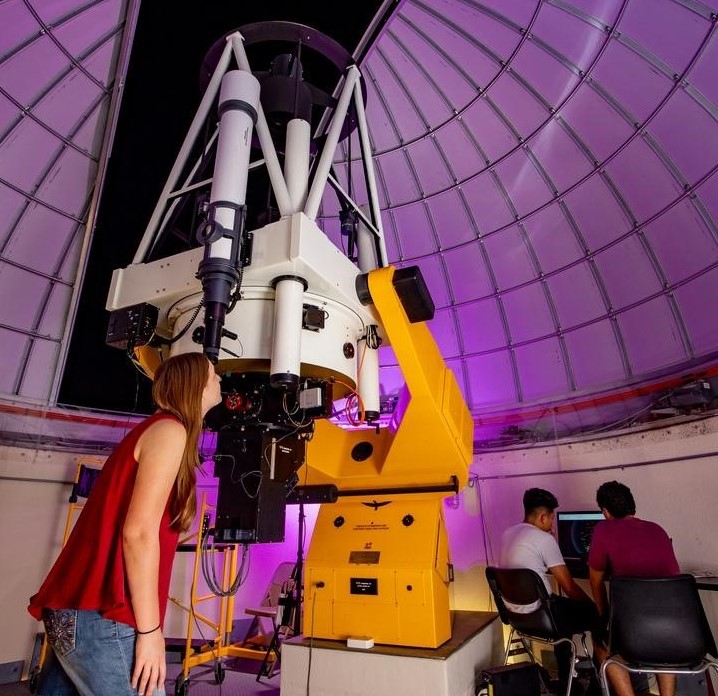Document Type
Article
Publication Title
Astronomy and Astrophysics
Abstract
Context. Ultracompact X-ray binaries (UCXBs) typically consist of a white dwarf donor and a neutron star or black hole accretor. The evolution of UCXBs and very low mass ratio binaries in general is poorly understood. In particular, the dynamical behavior of an accretion disk extending to a large radius (relative to the orbit) is unclear. Aims. We investigate the evolution of UCXBs in order to learn for which mass ratios and accretor types these systems can exist, and if they do, what are their orbital and neutron star spin periods, mass transfer rates and evolutionary timescales. Methods. We compute tracks of a binary containing a Roche-lobe overflowing helium white dwarf in which mass transfer is driven by gravitational wave emission. For different assumptions concerning accretion disk behavior we calculate for which system parameters dynamical instability, thermal-viscous disk instability or the propeller effect emerge. The significance of these processes during the evolution of an UCXB is considered. Results. At the onset of mass transfer, the survival of the UCXB is determined by how efficiently the accretor can eject matter in the case of a super-Eddington mass transfer rate. At later times, the evolution of systems strongly depends on the binary’s capacity to return angular momentum from the disk to the orbit. We find that this feedback mechanism most likely remains effective even at very low mass ratio. In the case of steady mass transfer, the propeller effect can stop accretion onto recycled neutron stars completely at a sufficiently low mass transfer rate, based on energy considerations. However, mass transfer will likely be non-steady because disk instability allows for accretion of some of the transferred matter. Together, the propeller effect and disk instability cause the low mass ratio UCXBs to be visible a small fraction of the time at most, thereby explaining the lack of observations of such systems. Conclusions. Most likely UCXBs avoid late-time dynamically unstable mass loss from the donor and continue to evolve as the age of the Universe allows. This implies the existence of a large population of low mass ratio binaries with orbital periods ~70–80 min, unless some other mechanism has destroyed these binaries. Even though none have been discovered yet, black hole UCXBs could also exist, at orbital periods of typically 100–110 min.
DOI
10.1051/0004-6361/201117880
Publication Date
2012
Recommended Citation
van Haaften, Lennart M.; Nelemans, Gijs A.; Voss, Rasmus; Wood, Matt A.; and Kuijpers, Jan, "The Evolution Of Ultracompact X-Ray Binaries" (2012). Aerospace, Physics, and Space Science Faculty Publications. 165.
https://repository.fit.edu/apss_faculty/165


